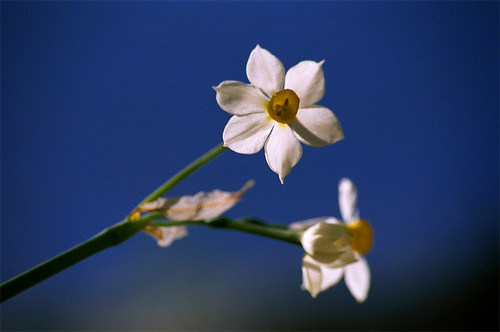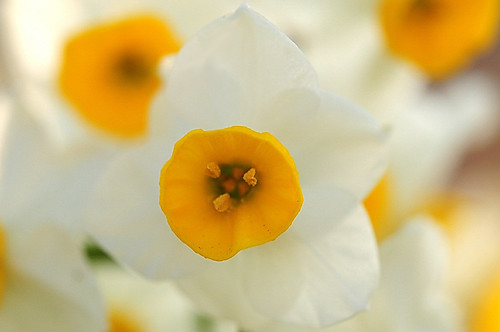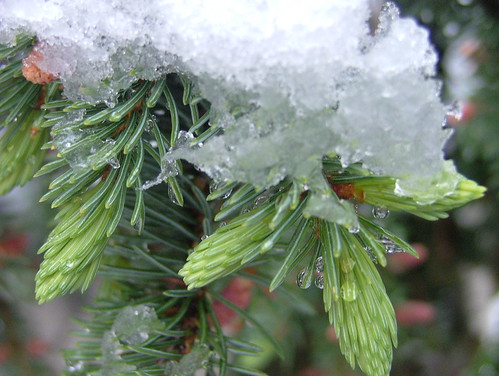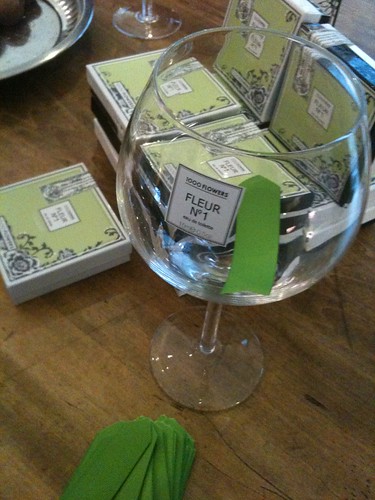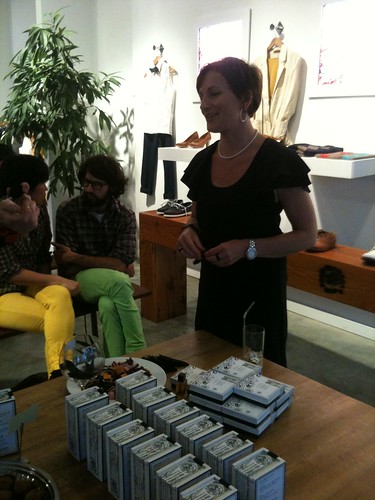Anatomy of a Flower
Narcissus is an elusive flower that has been possessing this perfumer's imagination for as long as could be. Vivid memories of the fresh wild flower begin with a folk song about picking narcissi in the fields, and encountering a white horse. The rhyme does not end too well.
נַרְקִיסִים קָטַפְתִּי,
סוּס לָבָן רָאֹה רָאִיתִי
וְעָלָיו רָכַבְתִּי.
וְהַסּוֹס דָּהַר דָּהַר
וַאֲנִי נָפַלְתִּי,
וְאֶת כָּל הַנַּרְקִיסִים
בַּשָּׂדֶה הִשְׁאַרְתִּי.
Narcissus has a very complex, unusual and sophisticated odour. According to Bo Jensen, while many odorants have been identified as common to narcissi (benzyl acetate, methyl benzoate, p-cresol, phenethyl alcohol and indole), none are unique to this flower. Van Dort et al. attempted to identify the characteristic compounds of narcissus, but while they found additional molecules (8-oxolinalool, 3,7-dimethyl-1,3,5-octatriene-7-ol, methyl 2-methyl-6-methylene-2,7-octadienoate, 8-hydroxylinalool, 2-methoxy-2,6-dimethyl-3,5,7-octatriene and lilac aldehyde), neither could be held responsible for the flower's personality.
Poucher delves deeper into the world of narcissus compounding, and offers an extensive list of no less than 73 raw materials to recreate the living flower's impressive aroma, including (in addition to narcissus and jonquille absolutes), natural essences such as bergamot, orris, rose otto, styrax, orange flower water absolute, ylang ylang, ambrette, and many other floral absolutes (orange flower, jasmine, rose, tuberose), sandalwood, labdanum, civet, costus and benzoin. Key synthetic materials revolve around various paracresyls (p-acetate, p-iso-butyrate, p-phenylacetate), floral molecules (methyl anthranilate, phenylethyl acetate and benzyl acetate), coumarin, vanillin, heliotropin, musk ketone, and the peach aldehyde undecalactone, among others.
I've been meddling with a beautiful narcissus absolute that my friend Jessica September Buchanan has sent me from France and to me, it is dense, rich, not nearly as heady as the fresh flower, but rather leaning onto the green side. It is reminiscent of hay fields, honey, waxy tuberose, and is both woody, sweet, green and powdery. In my search for the perfect narcissus companions that will accentuate its eccentric and subtle beauty, I have selected angelica, ylang ylang, clary sage absolute, liatrix, pinewood, pine moss, pine needle absolute, palmarosa, cabreuva, szechuan pepper, balsam poplar buds and fire tree. It's been a great challenge to work with this absolute, and neither of these complementary essences is particularly easy either, but it's been a rewarding journey which I will share with you over the next few days, leading up to launching the new creations that resulted from this process.


